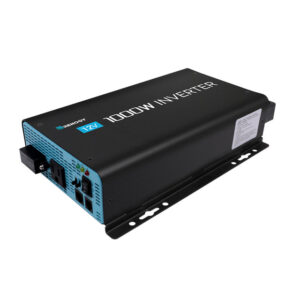
Choosing the right battery for your off-grid tiny solar home is a decision that can significantly influence your daily life and the efficiency of your solar system. It’s like picking the heart for your home’s energy system – it needs to be strong, reliable, and long-lasting. In this article, we’ll compare LifePO and gel batteries to give you the knowledge to make an informed choice.
Key Takeaways
- LifePO4 batteries are lightweight and have a higher depth of discharge, meaning you can use more of the battery’s capacity.
- Gel batteries are known for their durability and are less sensitive to temperature extremes, making them a good choice for varied climates.
- While LifePO4 batteries have a higher upfront cost, they may offer a better long-term value due to their longer lifespan.
- Maintenance requirements for gel batteries can be higher, but they are often a more budget-friendly option initially.
- The right battery for your off-grid tiny home will depend on your specific power needs, climate, and budget.

LifePO4 Batteries: The Modern Powerhouse
When it comes to powering your off-grid tiny home, LifePO4 batteries are often the first choice for many. They’re the new kids on the block in the battery world, bringing with them a host of benefits that make your solar home system run smoothly. Let’s dig into what makes them stand out.
The Advantages of LifePO4 Batteries for Solar Homes
LifePO4 batteries are celebrated for their high energy density. This means they can store more energy in a smaller space, which is essential in a tiny home where every inch counts. Here’s why they might be the right choice:
- Depth of Discharge (DoD): LifePO4 batteries can be used to their full potential. A high DoD means you can use more of the battery’s capacity without harming its lifespan.
- Longevity: They last longer. Imagine having a battery that can go through more charge cycles before it needs replacing – that’s lithium for you.
- Efficiency: They charge faster and retain their charge well, which is crucial when relying on solar power.
- Weight: They are lighter, a big plus for tiny homes, especially if you’re mobile.
Challenges and Considerations When Using LifePO4
Despite their advantages, LifePO4 batteries are not without their challenges. Most importantly, they come with a higher price tag. Investing in LifePO4 is investing in the longevity and efficiency of your solar system, but it does require a significant initial outlay.
Temperature sensitivity is another consideration. LifePO4 batteries don’t like extreme cold, and if you live in a chilly climate, you’ll need to take measures to keep them warm. But, they do function in in -4°F to 140°F.
How LifePO4 Batteries Enhance Off-Grid Living
With LifePO4 batteries, you can expect a consistent power supply that matches your solar input. This stability is vital for off-grid living, ensuring that your lights stay on, your fridge keeps running, and your devices remain charged.

Embracing Gel Batteries: Reliable and Robust
Gel batteries have been around the block a few times. They are the workhorses of the off-grid solar world, offering reliability at a more accessible price point than LifePO4. But what exactly makes them tick?
Why Gel Batteries Are Suited for Off-Grid Environments
Gel batteries use a thick, jelly-like electrolyte, which makes them less prone to leaking and more stable in various temperatures. Here’s why they might be the right fit for your tiny home:
- Temperature Tolerance: They can handle hot and cold climates better than some other battery types, which is essential if you live in an area with temperature extremes.
- Durability: Gel batteries are tough. They’re vibration-resistant and less likely to be damaged by rough conditions.
- Low Maintenance: They don’t require watering and have low self-discharge rates, making them a set-it-and-forget-it option.
Potential Limitations of Gel Battery Use
While gel batteries are a solid choice, they do have some drawbacks. They have a lower DoD compared to LifePO4, meaning you can’t use as much of their stored energy. They degrade in temperatures below 50°F and above 85°F when exposed for extended periods of time. They also charge slower and have a lower energy density, so you’ll need more space for them.
Comparing Maintenance and Longevity in Gel Batteries
Gel batteries typically have a shorter lifespan than LifePO4 batteries, and while they are low maintenance, they do require some upkeep. For example, they must be charged correctly to prevent premature failure.
For instance, overcharging a gel battery can cause voids in the gel, reducing its ability to hold a charge and shortening its life.
LifePO4 & Gel Battery Comparison
| Criteria | LifePO4 Battery | Gel Battery |
|---|---|---|
| Cost | $900-$2,0001 | $200- $600 |
| Efficiency | 95-99%2&4 | 85-90% |
| Depth of Discharge | Can typically be discharged to 80-100% without damage | Typically discharged to 50-70% to maximize lifespan |
| Heat Resistance | Wider applicable temperature range (up to 140°F) | Better in moderate temperature conditions (ideally 50°F – 85°F) |
| Cold Resistance | Excellent low-temperature performance (down to -4°F) | Tolerant of low temperatures, but performance is affected |
| Lifespan | Up to 2,000 – 5,000 cycles | 500-1,500 cycles |
Sources: 1. 18650batterystore.com 2. evlithium.com 3. ecotreelithium.co.uk 4. sunonbattery.com
Head-to-Head Comparison: LifePO4 vs Gel
Now, let’s put LifePO4 and gel batteries side by side and see how they stack up against each other in various aspects critical to off-grid tiny home living.
Comparing Costs: Upfront & Long-term
When you’re counting every dollar, the cost of your solar system’s battery bank is a big deal. LifePO4 batteries usually cost more upfront compared to gel batteries. For example, you might spend between $900 to $2000 for a quality lithium battery, while a gel battery might set you back about $200 to $600.
However, because LifePO4 batteries often last longer, they may provide more value over time. Think of it as paying more now to save on replacements later.

Efficiency and Performance Under the Sun
Efficiency is where LifePO4 really shines. They charge faster and more fully, meaning you get the most out of your solar panels. Gel batteries, on the other hand, charge more slowly and might not fully charge on days with less sunlight, affecting their overall efficiency.
Energy Storage and Capacity Showdown
Storage capacity is crucial, especially in a tiny home where space is at a premium. LifePO4 batteries can store more energy per pound, which means you can have a smaller, lighter battery bank with the same storage capacity as a larger, heavier gel battery bank.
But there’s more to consider than just storage. The usable capacity of a battery is just as important. LifePO4 batteries typically offer a depth of discharge of around 80-100%, while gel batteries might only offer 50-70%. This means you can use a greater percentage of the LifePO4 battery’s capacity before needing to recharge.
Environmental Factors: Heat and Cold Resistance
Both battery types have their quirks when it comes to temperature. Gel batteries are generally more robust in extreme temperatures, both hot and cold. LifePO4 batteries, however, can suffer in very cold weather and may require insulation or a heating system to maintain their efficiency.
Lifespan: Which Battery Lasts Longer?
Lifespan is where LifePO4 batteries really pull ahead. A LifePO4 battery can last for 2000 to 5000 cycles, while a gel battery might last for 500 to 1500 cycles. This means a LifePO4 battery could last you years longer than a gel battery, depending on how you use it.

Decoding the Solar Home Energy Storage Puzzle
Deciding between LifePO4 and gel batteries for your solar setup is like solving a puzzle. You need to consider all the pieces – cost, efficiency, capacity, temperature resistance, and lifespan – to see the full picture and make the best decision for your home.
FAQ
Can I Upgrade My Solar Battery System from Gel to LifePO4?
Yes, you can upgrade from gel to LifePO4 batteries. However, it’s important to ensure that your solar charge controller and inverter are compatible with LifePO4 technology. You may also need to reconfigure your battery bank and update your system’s settings to accommodate the new batteries’ charging profiles.
What Is the Depth of Discharge and Why Does It Matter?
Depth of Discharge (DoD) refers to how much of the battery’s capacity has been used. It matters because the deeper a battery is regularly discharged, the shorter its lifespan may be. LifePO4 batteries have a higher DoD compared to gel, allowing you to use more of their capacity without compromising their life expectancy.

How Do I Calculate the Battery Capacity I Need for My Tiny Home?
To calculate the battery capacity for your tiny home, start by listing all your appliances and their power consumption. Then, estimate how many hours you use each appliance daily. Multiply the power consumption by the hours of use to get the daily watt-hours for each appliance. Add these up for a total daily consumption, and consider your solar panel output and the number of sunlight hours you get. Your battery capacity should be large enough to store at least a couple of days’ worth of energy to cover you during less sunny periods.
As we wrap up this comparison between LifePO4 and gel batteries for off-grid tiny solar home living, remember that your specific circumstances will dictate the best choice. Consider your energy needs, local climate, budget, and the nuances of each battery type. Your choice in battery directly impacts the efficiency and reliability of your off-grid solar system. A well-chosen battery ensures you have power during the night or on cloudy days, providing peace of mind and energy security. It also means less maintenance, fewer replacements, and potentially lower costs over time.



